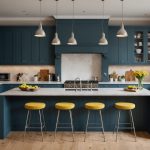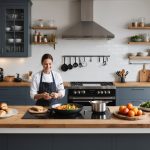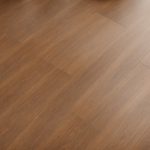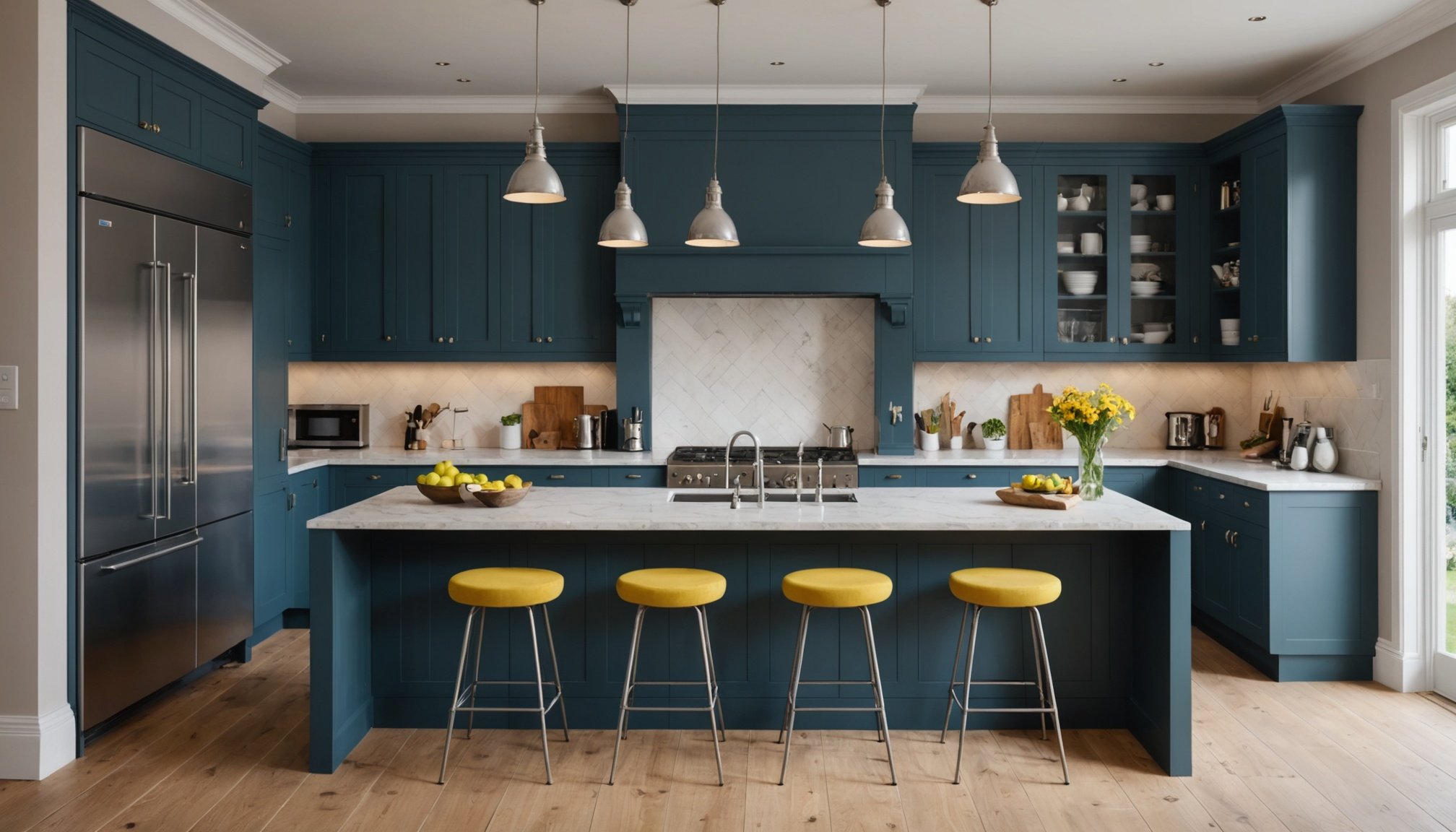Essential color principles for narrow UK kitchens
When designing narrow UK kitchens, kitchen color schemes play a crucial role in creating a sense of space. Light, neutral colors such as soft whites, pale grays, and muted pastels are often the best choice for small space design. These colors reflect more light, making the kitchen appear larger and airier. The psychological effect of such palettes reduces feelings of confinement and enhances openness, which is vital in narrow layouts.
Incorporating space-maximising colors means prioritizing shades that visually expand the room. For example, cool tones like light blues and greens can calm the senses and increase the perception of depth. Meanwhile, warmer neutrals provide a cozy yet uncluttered ambiance.
Additional reading : Maximizing efficiency: transforming small uk kitchens for seamless workflow
Recommended finishes include satin or semi-gloss paints, which help bounce natural and artificial light around the kitchen. Matte finishes, while stylish, tend to absorb light and reduce brightness. Smooth textures on cabinetry and walls avoid visual clutter, supporting the illusion of space. Combining these principles with clever UK kitchen ideas ensures narrow spaces feel inviting rather than cramped, making every inch count effectively.
Top color schemes to maximize space in a narrow UK kitchen
Choosing the best kitchen colors is crucial when working with a narrow UK kitchen. Bright colors create an illusion of more space, which is essential in compact areas. A classic approach uses white and off-white monochrome looks. These hues reflect light effectively, making walls and surfaces appear larger and more open. They also pair well with natural light, amplifying the sense of spaciousness.
This might interest you : Discover the secrets to selecting the ideal color palette for a cozy uk kitchen
For those preferring a softer touch, soft pastels and muted hues like pale blues, greys, or gentle greens reduce visual clutter. These colors gently blend into surroundings without overwhelming the room, thus preserving the feeling of openness. Applying pastels to cabinetry or walls creates a calm, airy atmosphere critical in tight kitchen layouts.
Strategic use of bold accent colours adds depth and contrast without shrinking the space. For example, a splash of navy or charcoal on a single feature wall or kitchen island creates focal points, drawing the eye and making the room feel more dynamic. This contrast breaks monotony while enhancing the overall modern kitchen design. Combining these palettes balances functionality with style, allowing narrow kitchens to feel bright, spacious, and welcoming.
Visual examples from real UK kitchens
Inspiring color and layout transformations
Visualizing the impact of kitchen color inspiration is easier through real-life examples. Narrow UK kitchens often face space challenges, but clever color schemes transform them dramatically. For instance, many makeovers start with light, neutral palettes such as soft greys, warm whites, or pale blues. These colors reflect natural light, creating an airy feel in compact spaces.
Before-and-after kitchen photos reveal how simple changes like painting cabinetry white or adding glass-fronted units can open up a narrow room. One project swapped dark oak for a glossy cream finish, giving a cramped kitchen a modern, spacious look. The layout often incorporates clever storage solutions and streamlined worktops to enhance functionality without overcrowding.
Descriptions highlight the strategic use of contrast too: darker floors or backsplashes paired with light walls add depth while maintaining brightness. These thoughtful decisions showcase why UK kitchen makeovers succeed by balancing aesthetics and practicality. Such examples inspire those considering similar updates, showing how even modest spaces can become welcoming and stylish.
Exploring a variety of real kitchens offers valuable insight into how color and layout choices shape the overall ambiance and utility. This reinforces the benefits of planning kitchen color inspiration carefully for any narrow UK kitchen.
Expert tips for choosing colours in a narrow kitchen
When it comes to interior designer advice for a narrow kitchen, selecting the right colours is crucial to enhance the sense of space. Light, neutral tones for walls can open up the room, making it feel brighter and larger. Consider soft whites, pale greys, or pastel shades—they reflect light well and avoid the claustrophobic feel that dark colours can create.
Kitchen cabinetry colors should complement the walls without overwhelming the space. Opt for muted or monochrome palettes to maintain a cohesive look. Glossy finishes on cabinets can help bounce light around, adding visual depth. Avoid heavy, dark cabinetry that can make the kitchen feel cramped.
When coordinating backsplash, flooring, and countertop hues, aim for harmony rather than contrast. Using similar tones across these surfaces creates flow and continuity, essential in narrow kitchens. For example, a light marble countertop paired with similarly coloured backsplash tiles can streamline the visual effect.
Lighting plays a vital role in colour perception. Natural light enhances true hues, so positioning reflective surfaces near windows is beneficial. For artificial lighting, choose warm LED bulbs that replicate sunlight, preventing colours from appearing dull or cold. Proper color selection tips empower you to blend aesthetics with practical spatial improvements.
Achievable solutions for UK homeowners
For UK homeowners seeking affordable kitchen updates, focusing on paint and materials is a smart place to start. Choosing budget-friendly paints or peel-and-stick tiles can instantly refresh the kitchen’s appearance without costly renovations. DIY color tips, like using light tones to open up space or bold accents for personality, help create a vibrant yet cohesive look. These options are particularly effective in smaller kitchens where every choice impacts the overall feel.
Quick swaps can dramatically improve kitchen style without breaking the bank. Updating accessories such as handles, light fixtures, or even small appliances injects new life into the space. Textiles like curtains, rugs, and tea towels are excellent for renters, offering renter-friendly kitchen ideas that don’t require permanent changes but express personal style.
Maintaining a cohesive look in restricted spaces involves coordinating colors and textures carefully. Using a consistent palette across walls, furnishings, and textiles avoids visual clutter. Well-chosen DIY color tips can unify disparate elements, making kitchens feel larger and more inviting. With these practical, stylish solutions, UK homeowners can transform their kitchens efficiently and economically.




